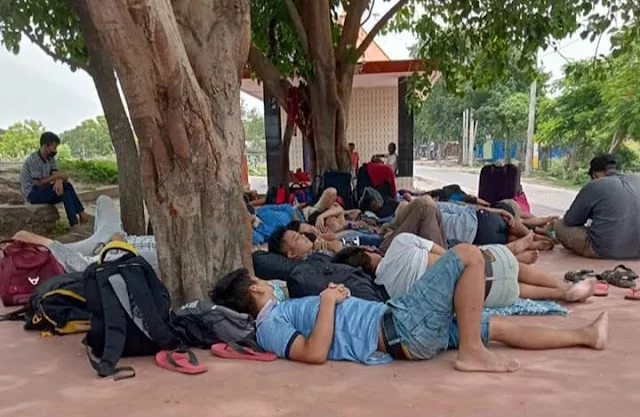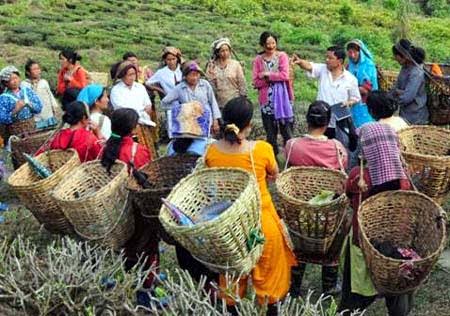Hariprasad ‘Gorkha’ Rai is a well-known name in Assamese and Nepali literature. The worthy son of the soil tied a number of regional as well as national languages into a single whole and thus made literary harmony possible.
 |
| Hariprasad ‘Gorkha’ Rai |
Hariprasad ‘Gorkha’ Rai was born in Kohima (then a part of Asom) on July 15, 1914 to Dhanraj Rai and Yashoda Rai. He received primary education at home and then at the Kohima Lower Middle School. ‘Gorkha’ Rai was an MA in Assamese, English and Philosophy and studied in Delhi and then in Santiniketan for a first class graduate degree in Hindi.
Hariprasad ‘Gorkha’ Rai started his service career as a teacher at Kohima FT school in 1935. After 20 years of regular service in that school, ‘Gorkha’ Rai joined the Guwahati centre of All India Radio as an assistant director. He retired from service in 1978.
‘Gorkha’ Rai tried his hand in story, poem and article writing from the age of 18. His writings flourished in the contemporary magazines such as – Gorkha Sevak, Uday, Suman, Usha, Himalee, Ashtitwa, Himadri and Suskera published from India and even Nepal. Kavita Sangraha, Yahaan Badnam Huncha and Kavita Machariko Boli are ‘Gorkha’ Rai’s milestones in Nepali literature, in addition to his one-act plays Ek Tukra Roti, Krishna Janma and Janani Janmabhumi. His plays Puru and Sikandar and Satyavana are examples of his mastery as a playwright. ‘Gorkha’ Rai’s books Asomka Chheukuna and Udisyaka Hernuparne Thaunharu show his genius as a writer of travel experiences.
Hariprasad ‘Gorkha’ Rai served both Assamese and Nepali literature with equal sincerity and passion. His stories, poems and articles appeared in Assamese magazines like Abahan, Banhi, Soumar Jyoti, Udayachal, Ramdhenu and Monidwip. ‘Gorkha’ Rai was the co-author of Asomar Janajati. In addition to it, Doogaraki Mohan Bibhuti-Adikavi Bhanubhakta Aaru Sankardev, Chabilal Upadhyayar Jiwani and Swadhinata Sangrami Neta Dalbir Singh Lohar are ‘Gorkha’ Rai’s noteworthy contributions to Assamese literature as a biography writer. Eri Aha Dinbor, ‘Gorkha’ Rai’s autobiography, is enriched with his lucid writing style. Being well versed in Oriya, Bangla, Hindi, English, Manipuri, Nagamese, Mising and Japanese, in addition to his own languages Assamese and Nepali, ‘Gorkha’ Rai could travel in the realms of a number of regional literatures of India. His translation of Birendrakumar Bhattacharya’s Iyaruingam and the translation of Mising folk songs into Nepali enriched this language.
It was because of ‘Gorkha’ Rai’s contribution to Assamese and Nepali literature that Madhab Deka Bezbaruah, the editor of Banhi magazine, advised him to use the word ‘Gorkha’ as his middle name. It was in the year 1975 that the Asom Sahitya Sabha gave ‘Gorkha’ Rai a certificate of eulogy and started paying him Rs 700 per month as literary pension. This was followed by the announcement of a lifetime literary pension to this noted writer by the Asom government in 1975. It was for ‘Gorkha’ Rai’s contribution to Nepali literature that in 1996 he received the Jagadamba Award from the Madan Award Trust of Nepal and in the year 2000 he received the Parashmoni Award from the Kalimpong Nepali Sahitya Adhyayan Samiti. ‘Gorkha’ Rai’s works for literary harmony did not go unrewarded as he received the Phoolchand Khandel Sanghati Award from the Asom Sahitya Sabha in 1999.
– Courtesy: The Assam Tribune





